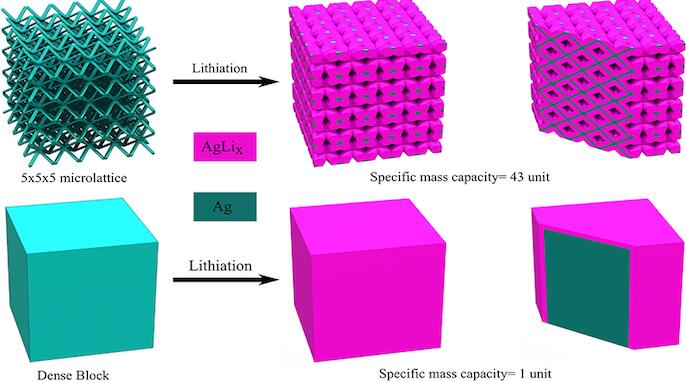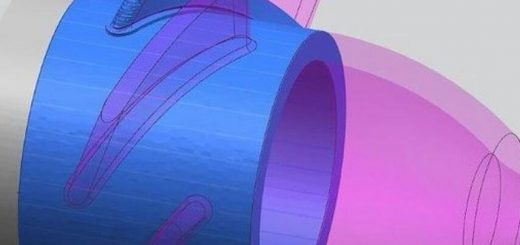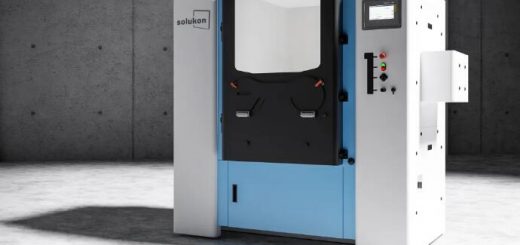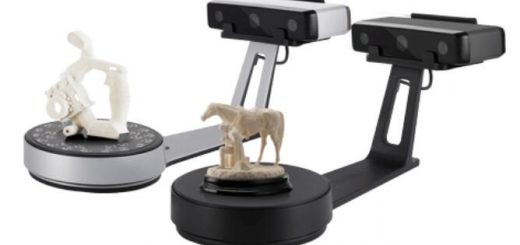Mean Lightweight, Longer-Lasting Electronics
Researchers from Carnegie Mellon University have developed a new method of fabricating battery electrodes using 3D printing.
In collaboration with the Missouri University of Science and Technology, the team can 3D print a microlattice structure that improves the capacity and charge-discharge rates of lithium-ion batteries.
“In the case of lithium-ion batteries, the electrodes with porous architectures can lead to higher charge capacities,” study lead Rahul Panat, an associate professor of mechanical engineering at CMU, said in a statement. “This is because such architectures allow the lithium to penetrate through the electrode volume leading to very high electrode utilization, and thereby higher energy storage capacity.”

In normal batteries, as much as 30 to 50 percent of the total electrode volume is left unutilized.
“Our method overcomes this issue by using 3D printing where we create a microlattice electrode architecture that allows the efficient transport of lithium through the entire electrode, which also increases the battery charging rates,” Panat explained.
Additive manufacturing can be—and has been—used to construct porous electrodes for lithium-ion batteries. But, as Carnegie Mellon pointed out, design options are limited: Previously, the best choice was “interdigitated geometry” (i.e., metal prongs interlocked like the fingers of two hands, lithium moving between each side).
An interdigitated geometry, though it does allow lithium to transport through the battery efficiently during charging and discharging, is not optimal (via Rahul Panat & Mohammad Sadeq Saleh)
Panat & Co. believe their technology—a major advance in printing complex geometries for 3D battery architectures—will be ready for industrial use in about two to three years.
This “revolutionary” method will be important for consumer electronics, medical devices, and aerospace applications, according to CMU; companies can produce higher-capacity batteries for the same weight, or lighter batteries with the same capacity.
But unlike the 3D printers used by sexbot makers, the U.S. Marines, NASA, or MIT, the Carnegie Mellon researchers developed their own method for rapidly assembling individual droplets into a three-dimensional structure.
“Because these droplets are separated from each other, we can create these new complex geometries,” Panat said. “If this was a single stream of material, as in the case of extrusion printing, we wouldn’t be able to make them.
“This is a new thing,” he continued. “I don’t believe anybody until now has used 3D printing to create these kinds of complex structures.”
The team, whose study was published in the journal Additive Manufacturing, is also working on more complex 3D structures that can be used simultaneously as structural and functional materials—think a drone wing that is also a battery.
Source: geek.com




Recent Comments